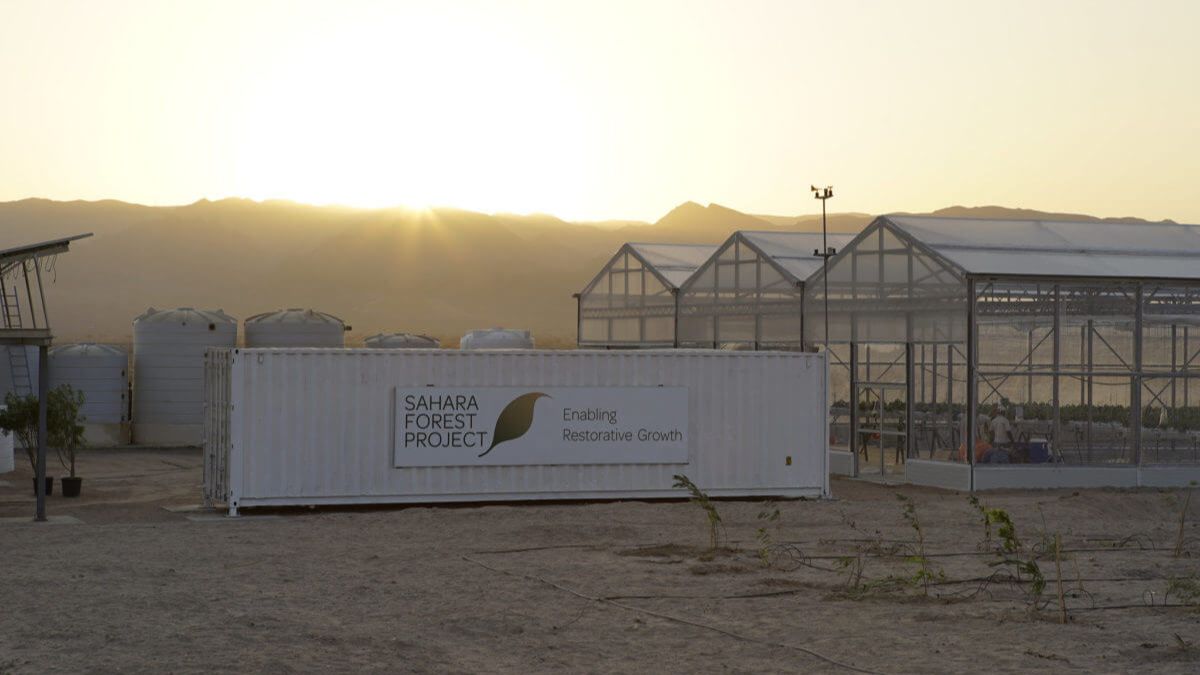Sahara Forest Project is an incredible project that aims to provide fresh food, water, and renewable energy in the hot and other regions. It also aims to re-vegetate the areas of the uninhabited desert! Using some of the most technologically forward methods, the pilot project is located located in Qatar, followed by the same in Jordan and Tunisia.
Sahara Forest Project Aims To Re-Vegetate The Dessert
View this post on Instagram
With the aim of saving the environment while practising the art of building lives, the Sahara Forest Project is certainly an ambitious one. The Sahara Project Foundation is aiming to take advantage of the resources available on the planet to compensate for the scarcity. As mentioned previously, the aim is to rehabilitate the uninhabited desert, by transforming it into a sustainable albeit profitable source of food, water, energy, and vegetation. While the model has been tested in several places, it has already been implemented in Qatar, Jordan, and Tunisia.
The Process Is Inspired By the Namib Desert Beetle
View this post on Instagram
For those who aren’t aware, the model of this research project is based on the inspiration drawn from the Namib Desert Beetle according to Never Enough Architecture. Yes, for those who aren’t aware, this insect has learnt that when it’s foggy in the desert, it ends up climbing up the dune and stands on its head while lifting its body to wait until the water droplets that have been collected on its back, roll down to its mouth. Following similar principles, the project has combined the method used by the Namib Desert Beetle and the traditional fog collection system.
They use Seawater Greenhouse Technology, which allows them to use evaporated seawater to humidify the air and thereby, making it ideal for plant growth. After this, it is condensed with the help of cardboard panels, which help them to produce freshwater for irrigation. Not to mention, the greenhouse isn’t the only thing that is affected by the cool humid air, but even the surrounding area, that might end up creating an oasis condition.
Also Read: Abu Dhabi To Get A Nobu, With The Doors Expected to Open in 2027; All About The Hotel & Residences
Pilot Projects In Qatar, Jordan & Tunisia
View this post on Instagram
It should be noted that the salt that is derived from the distillation process can also be sold commercially or be used for creating more sustainable materials. Not to mention, their aim is also to re-vegetate the desert. So, this can be achieved by combining water efficiency, evaporative systems, and of course, soil reclamation. As it happens, Tunisia has already been able to grow new crops while also taking advantage of the seawater that is being used for irrigation and cooling phases
Doesn’t it sound like a fantastic project? Who knew a small bottle might inspire a whole project? Well, it really does seem to promise some pretty optimistic results!
Cover Image Courtesy: saharaforestproject.com
For more such snackable content, interesting discoveries and latest updates on food, travel and experiences in your city, download the Curly Tales App. Download HERE.
Good news! We are on WhatsApp! Subscribe to Curly Tales WhatsApp Channel to stay up-to-date with exclusive content and BTS. Join HERE.
First Published: November 15, 2023 4:12 PM



